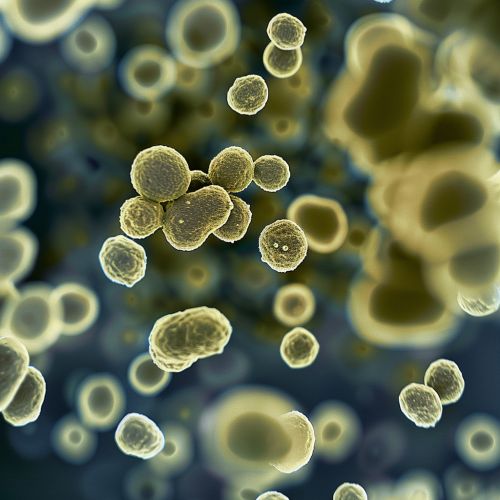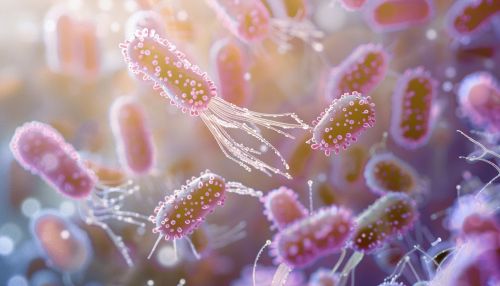Thiotrichaceae
Overview
The Thiotrichaceae are a family of proteobacteria. They are part of the order Thiotrichales, which is characterized by a diverse group of sulfur bacteria. The family Thiotrichaceae is known for its ability to oxidize reduced sulfur compounds, a trait that is significant in the global sulfur cycle.


Characteristics
Members of the Thiotrichaceae family are typically rod-shaped and motile, with a polar flagellum. They are Gram-negative bacteria, meaning they do not retain the violet crystal violet stain used in the Gram staining method of bacterial differentiation. They are chemoautotrophs, deriving energy from chemical reactions and using carbon dioxide as a carbon source.
Sulfur Oxidation
The Thiotrichaceae are known for their ability to oxidize reduced sulfur compounds, such as hydrogen sulfide, elemental sulfur, and thiosulfate. This oxidation process is a key part of the global sulfur cycle, as it helps to convert sulfur from a reduced state to a more oxidized state, making it available for use by other organisms.
Habitat and Distribution
Thiotrichaceae are found in a variety of environments, including marine and freshwater habitats, as well as terrestrial environments. They are particularly common in environments with high concentrations of sulfur, such as hot springs and deep-sea hydrothermal vents.
Role in the Environment
The Thiotrichaceae play a significant role in the environment due to their ability to oxidize reduced sulfur compounds. This process contributes to the global sulfur cycle, and helps to maintain the balance of sulfur in the environment.
Genus within Thiotrichaceae
The Thiotrichaceae family includes several genera, including Beggiatoa, Thioploca, and Thiomargarita. Each of these genera has unique characteristics and plays a unique role in the environment.
